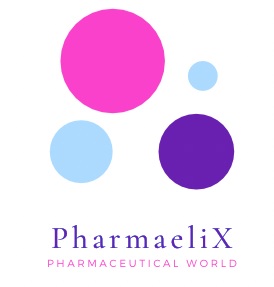Quality Risk Management (QRM) is an important aspect of the Pharmaceutical Industry as per ICH Q9. Hence, brief details on “QRM” is illustrated here for guidance purpose.
Principles of Quality Risk Management (QRM)
The Quality Risk assessment (QRM) should be based on scientific knowledge and linked to the protection of patients.
Quality Risk Management (QRM) is a systematic process of identifying, assessing, and prioritizing potential risks that could affect the quality of a product or service. The goal of QRM is to minimize the potential impact of these risks by implementing risk mitigation strategies.

ICH Quality Risk Management (ICH QRM | ICH Q9)
ICH Quality Risk Management (ICH QRM | ICH Q9) refers to a set of internationally recognized guidelines for managing quality risks in the development, registration, and post-approval of pharmaceutical products. The guidelines were developed by the International Council for Harmonisation of Technical Requirements for Pharmaceuticals for Human Use (ICH) and provide a systematic approach for assessing and mitigating quality risks throughout the entire product lifecycle. The ICH QRM guidelines provide a common framework for risk management and help to ensure that pharmaceutical products are safe, effective, and of high quality. The ICH QRM guidelines are widely used by regulatory agencies and the pharmaceutical industry and are recognized as a benchmark for quality risk management practices in the pharmaceutical industry.
Quality Risk Management Process (ICH Q9)
This process helps organizations ensure that their products or services meet the required quality standards, and ultimately improve customer satisfaction. The steps involved in QRM include risk identification, risk assessment, risk prioritization, risk mitigation, and ongoing risk monitoring.
Risk Identification
Three fundamental questions shall assess, as follows.
- What might go wrong (Failure mode)?
- What is the likelihood, that it will go wrong (Probability)?
- What are the consequences (severity)?
Risk identification shall be done during team discussions based on defining the risk, Brainstorming, Trends, and compilation of observations or notifications.
Risk Evaluation (Quantitative approach)
The evaluation of risk assessment shall carry either by qualitative or quantitative approach.
Quantitative Assessment: In this approach, the estimation of risk can express by using a Numerical probability. It can use for the introduction of a new product, new facility, significant changes, modification, a restart of operation after shutdown, or as recommended by QA.
Risk priority number: Severity X occurrence X detection
Rating : (1-10) Only 1, 4, 7, and 10 shall use as per SOP. (individual divisions from the 1-10 scale can use if members are able to categorize ratings).
Risk category
1-125 Low risk
126-343 Medium risk
344-1000 High risk
Tools: FMEA (Other risk analysis tools as per ICH Q9 may use.)
Risk Evaluation (Qualitative approach)
Qualitative Assessment: In this approach estimation of risk is expressed using a qualitative description “high, medium or low”.
Overall risk shall conclude as per the Table in the SOP. (However, it can use for incidents, complaints, and decision-making as recommended by QA).
Quality Risk Management (Risk Control)
Risk control for decision-making to reduce or accept risks and to reduce risks to an acceptable level.
Based on process criticality and requirements a predefined tolerable level shall fix to prioritize the risk control measures.
If any mitigation is identified, the target date and the responsible person shall be identified.
CAPA shall log to track in the risk summary.
Risk Summary (Conclusion)
The mitigation plan for all the risk assessments shall update in the risk summary register.
Risk Communication
The outcomes of the QRM Process should communicate to relevant stakeholders.
Senior management shall be informed whenever a high risk is identified during risk assessment.
Quality Risk Management (Risk Review)
All residual risks shall be verified for their adequacy in the following circumstances.
- Any events which influence initial risk management.
- Any new risk introduced during the implementation of risk mitigation.
- Whenever new experience is araise/ gains.
- Residual risk annually.
Stay tuned here for never-before Pharma Articles – OOS SOP Latest Guidance 2023, Best Quality Assurance in Pharma industry

Trackbacks/Pingbacks